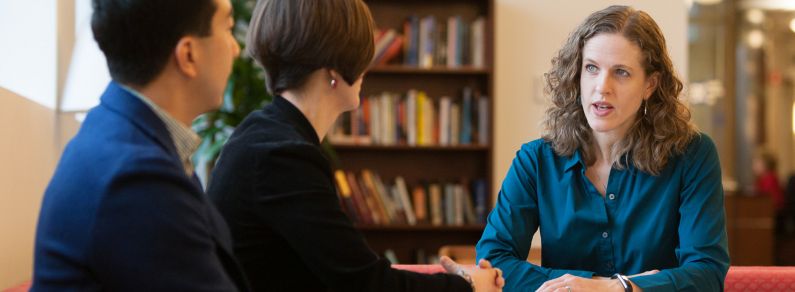Speaking with One Voice for Suicide Prevention
September 07, 2018

It’s September, and that means we’re all marking Suicide Prevention Day/Week/Month—my 11th annual observance since joining SPRC in September 2007. In that time, I’ve witnessed a profound shift in the national conversation around suicide prevention, which has been shaped by the many different viewpoints of those working in the field. From mental health clinicians to people with lived experience, from researchers to public health folks like me—we all bring an important perspective to the complex and tragic issue we work to prevent every day. Yet, despite this diversity in our field, we are increasingly speaking with one voice around a common theme: hope.
We’re changing the messages we’re sending to the public. After years of working to raise awareness about suicide as a public health issue, suicide prevention and related fields are starting to shift the focus of our public communication efforts. In line with the Action Alliance’s Framework for Successful Messaging, we’re highlighting stories of hope and recovery after struggle and loss, as well as actions people can take to support those in distress. While there’s still work to be done, our messaging is moving more and more from awareness to action, empowering the public to seek help for themselves and offer hope to those in distress.
Our conversation with the news media is changing. June was a tough month, with high-profile celebrity suicide deaths coinciding with new data from CDC and VA that showed steady increases in suicide rates across the country. Amid an unprecedented media blitz, many national partners spoke with news media outlets from CNN to Al Jazeera. Together, we got out the message that suicide is complex but preventable. Our united voices let the news media know that, for every tragic loss, there are hundreds of people who consider suicide but don’t die; most people with a mental illness don’t die by suicide; and there are many who have lived through dark times and survived. And we made clear that there are resources available for anyone who is struggling, including the National Suicide Prevention Lifeline.
The news media is responding by changing the story they’re telling. When I first read the news of Anthony Bourdain’s death, it was not immediately clear to me how he had died—that’s not the way the media used to cover suicide. Although room for improvement remains, news outlets like CNN focused on Bourdain and Spade’s legacy rather than how they died, and reporters shared their own stories of struggle and loss. Even more notable, in the aftermath of that tough period in June, many in the media are seeking to tell different types of stories. They are diving deep and embracing the complexities of the issue. They want to know how they can help highlight the limited resources suicide is receiving in comparison to other major causes of death. They want to help us tell stories that highlight survival and prevention.
Finally, we’re uniting for National Suicide Prevention Week in a new way. While groups have typically developed their own unique campaigns for Suicide Prevention Day/Week/Month observances, we have started to sing as a chorus of voices rather than competing soloists. Individual organizations still have their own websites and resources, but these are now united through the #BeThere collective messaging effort led by the Action Alliance and its partners. This effort includes resources and social media events meant to amplify our unified voices so that we can be heard across the country. And again, our overarching message is that everyone can make a difference in the life of someone who is struggling by reaching out and supporting a person in need.
There is still work to do. There are still messages, media reporting, and entertainment storylines that could be better, and our efforts to change that are ongoing. But our hard work and collaboration are paying off, and our message of hope is starting to be louder than the one of despair. Let’s keep working together to amplify messages of prevention, resilience, and recovery so that everyone can play their part in suicide prevention and help one another through moments of struggle. And let’s recognize our success in uniting, as few fields have been able to, around the shared theme of hope for those who are suffering.
Spark Extra! Check out our Suicide Prevention Month ideas for action.
